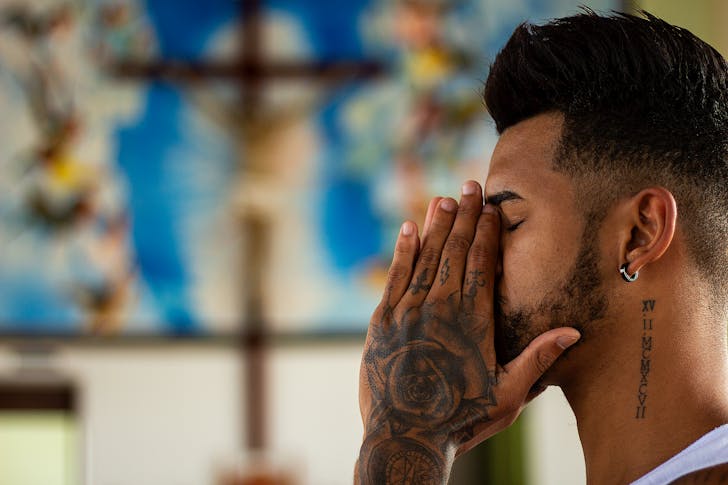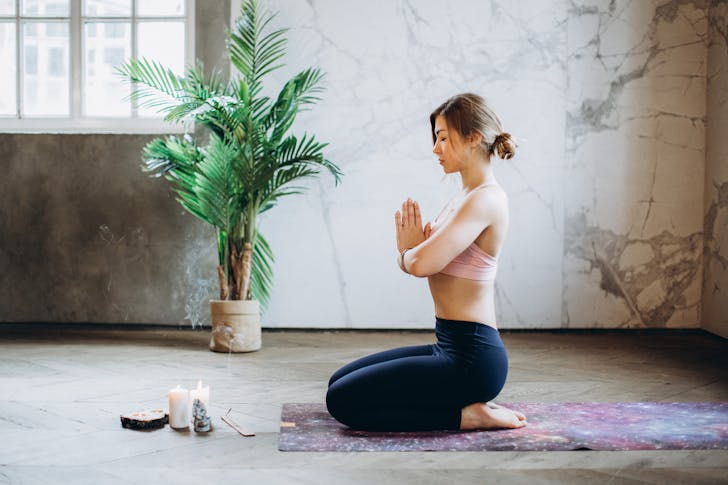
Prayer vs. Meditation: 5 Key Differences to Know

Prayer and meditation may seem similar, but they serve different purposes. Meditation calms the mind, while prayer connects to something greater. One is about inner stillness, the other about communication.
Whether seeking peace or guidance, both practices can enrich life in their own way. Here are some of the major differences you should know:
Meditation Is About Mindfulness, Prayer Is About Connection
First up: Meditation helps clear the mind. It focuses on breathing, stillness, and awareness of the present moment. People meditate to reduce stress, improve focus, or find inner peace. It is more about training the mind than asking for anything.
Prayer, on the other hand, is a conversation. It connects a person to a higher power, expressing gratitude, seeking guidance, or asking for help. While meditation is often silent, prayer can be spoken, sung, or written. The goal is a spiritual connection, not just mental clarity.

Ric / Pexels / Prayer and meditation serve two different purposes. While prayer engages the mind, meditation stills it.
The key difference lies in the objectives of these practices. While the way they are performed can be similar, they serve completely different purposes.
Meditation Stills the Mind, Prayer Engages It
One of the major benefits of meditation is that it teaches the mind to quiet down. Thoughts come and go, but the goal is not to react. Over time, this practice can lead to better concentration and emotional balance. It is about detaching from distractions and staying in the present.
Unlike meditation, prayer is more active. It involves words, emotions, and even physical expressions like kneeling or raising hands. Instead of observing thoughts, prayer directs them – toward a deity, a request, or an expression of thanks. It is not about emptying the mind but engaging it with purpose.
Meditation Has No Religious Ties, Prayer Does
Meditation can be spiritual, but it doesn’t have to be. Many use it as a mental exercise, much like going to the gym for the brain. It is common in mindfulness practices, therapy, and wellness routines. Anyone can meditate, regardless of beliefs.
However, prayer is deeply rooted in faith. It is found in religions worldwide, from Christianity to Hinduism to Islam. The act of praying is a core part of worship, often involving rituals, scriptures, or traditional prayers passed down for centuries.

Elly / Pexels / Through prayer, you seek guidance. And through meditation, you seek self-discovery.
Meditation Is About Self-Discovery, Prayer Seeks Guidance
Essentially, meditation turns inward. It is a tool for self-reflection, helping people better understand their thoughts, emotions, and reactions. It encourages personal growth by fostering awareness and acceptance. The answers come from within.
Prayer looks outward. It is a request for wisdom, healing, or strength from a divine source. Those who pray believe in a presence beyond themselves, offering guidance or comfort. It is not about self-discovery but seeking support from something greater.
Meditation Can Be Silent, Prayer Often Involves Words
Meditation doesn’t require words. In fact, many meditation practices encourage silence, focusing instead on breath, visualization, or bodily sensations. Even guided meditation uses only a few phrases to help settle the mind.
On the other hand, prayer is usually verbal. People pray aloud in groups, whisper in solitude, or write down their thoughts in journals. Some prayers follow a structure, while others are spontaneous. Words shape the experience, making it an intentional act of faith.
More in Spiritual
-
`
Some First Date Night Ideas That Are Surprisingly Cheap
Looking for cheap date night ideas that won’t break the bank but still impress your date? Whether it is your first...
September 14, 2024 -
`
Where to Vacation in December for a Memorable Holiday?
As December rolls in, travelers are faced with a myriad of choices for a perfect holiday escape. If you’re wondering where...
September 4, 2024 -
`
What Is a Personal Mantra and Tips to Develop Yours in Minutes
Are you feeling stuck or overwhelmed? It’s easy to lose focus when life gets challenging. But what if a simple phrase...
August 30, 2024 -
`
How to Control Anger – Practical Tips and Techniques
Anger is a complex emotion that everyone experiences from time to time. It can arise from a variety of triggers and,...
August 23, 2024 -
`
How to Tell if a Bipolar Man Loves You – Key Signs and Indicators
Relationships, especially those involving someone with bipolar disorder, can be challenging but rewarding. The highs and lows characteristic of bipolar...
August 15, 2024 -
`
How to Prepare for All You Can Eat Sushi Buffets – Tips & Tricks
Are you ready to enjoy a sushi buffet and make the most out of your dining experience? If you’re a sushi...
August 9, 2024 -
`
How Does the Brain Play Into Mindset? The Power of the Mindset
How does the brain play into mindset? Within the brain lies the foundation of our mindset, shaping our perceptions and guiding...
August 3, 2024 -
`
How Often Should You Meditate to Achieve Your Goals
How often should you meditate to achieve its benefits? This question is often asked by those looking to incorporate this practice...
July 25, 2024 -
`
How to Be a Better Wife? 10 Essential Tips
Marriage is a beautiful journey, a tapestry woven with moments of joy, tenderness, and perhaps even a few snags along the...
July 19, 2024















You must be logged in to post a comment Login